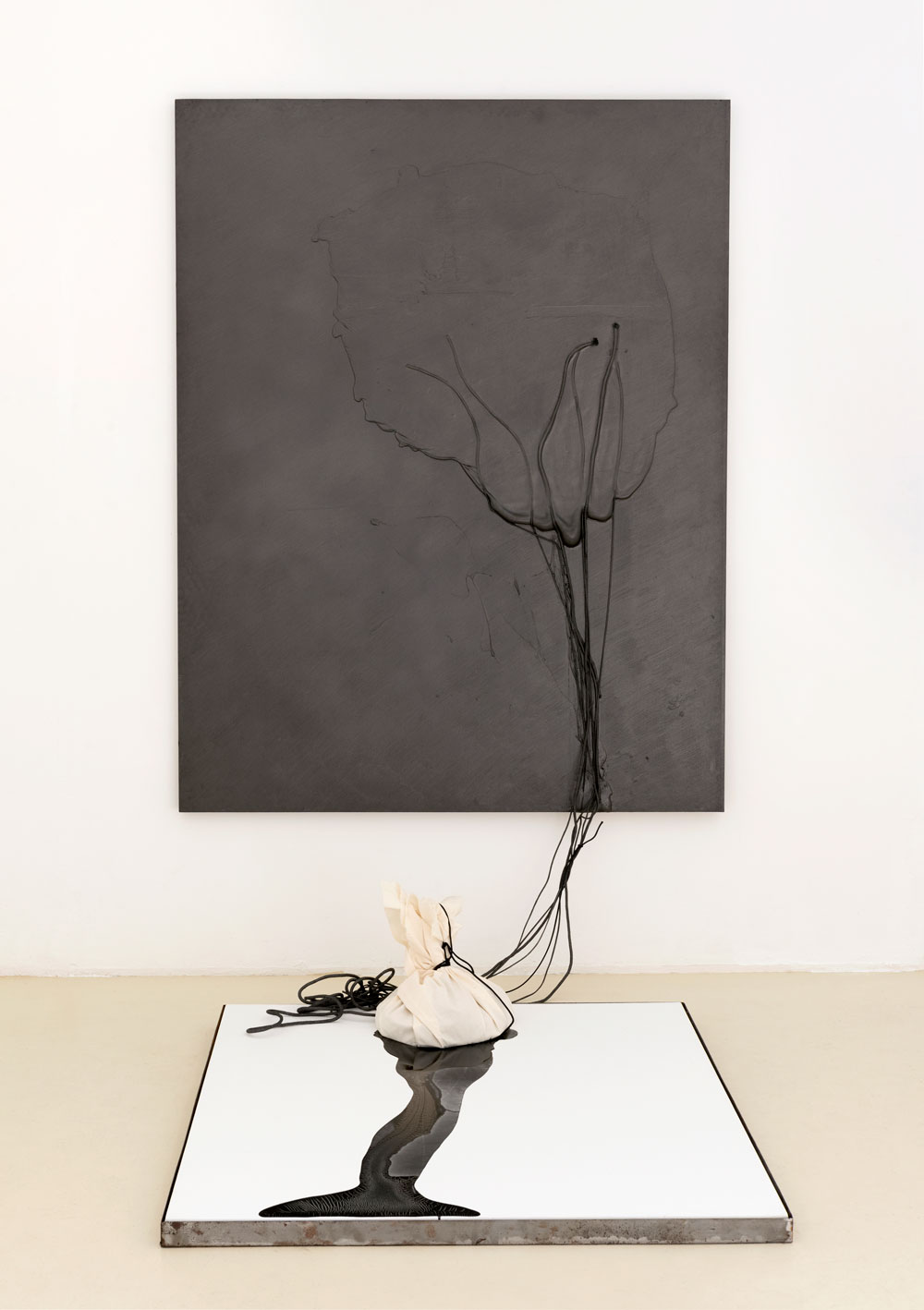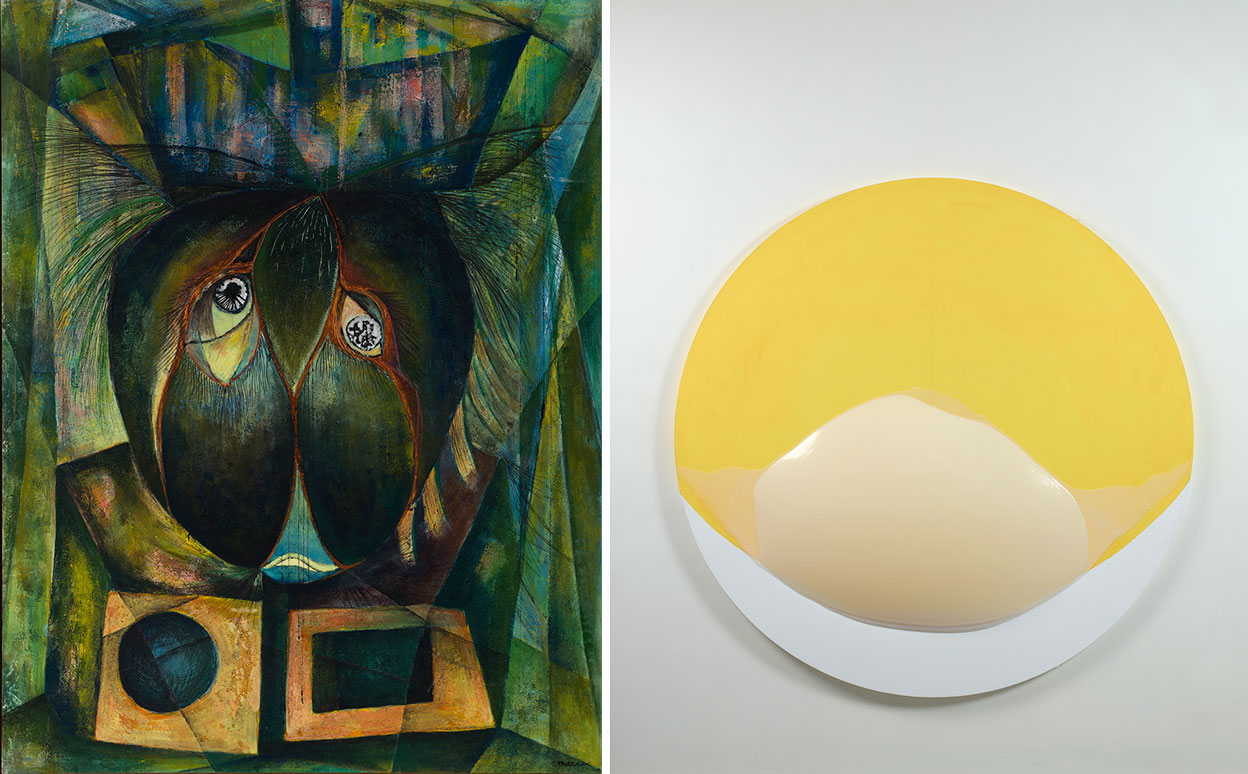ART-PRESENTATION: Takesada Matsutani
 From the early 1960s until the 1970s Takesada Matsutani was a key member of the ‘second generation’ of the influential post war Japanese art collective, the Gutai Art Association. Over 60 years Matsutani has developed a unique visual language of form and materials. As part of the Gutai group, Matsutani experimented with vinyl glue, using fans and his own breath to manipulate the substance, creating bulbous and sensuous forms reminiscent of human curves and features.
From the early 1960s until the 1970s Takesada Matsutani was a key member of the ‘second generation’ of the influential post war Japanese art collective, the Gutai Art Association. Over 60 years Matsutani has developed a unique visual language of form and materials. As part of the Gutai group, Matsutani experimented with vinyl glue, using fans and his own breath to manipulate the substance, creating bulbous and sensuous forms reminiscent of human curves and features.
By Efi Michalarou
Photo: Centre Pompidou Archive

Covering sixty years of the career of Takesada Matsutani this exhibition at the Centre Pompidou is the first major retrospective in France of the Japanese artist who has been living and working in Paris since 1966. The exhibition is built around an exceptional donation of 22 works made by Matsutani to the National Museum of Modern Art, which range from the late 1950s to the present. Takesada Matsutani’s fascination with organic material and propagation, begun in his Gutai period, and the artist’s ties with time and space marked by a Buddhist culture, moved in the 1970s to an experimentation with “hard edge” accents before taking on a very personal “black” creation. In 1963, at the age of 26, Matsutani was accepted by Gutai’s* founder, Jiro Yoshihara into the group Yoshihara was convinced of the originality of the artist’s abstract paintings; his invention of surfaces covered with gaping blister-like forms of vinyl adhesive glue. Takesada Matsutani began a dialogue with organic matter, the foundation block of his work to come and which he entitled “Propagation” in the 1960s. Perhaps because in his adolescence he suffered from tuberculosis, he discovered cells, observed under microscope, reinforcing his interest in the living and growing, a fascination that developed along with that for the abstract works of Kandinsky. Thanks to a first prize won in 1966 he received a grant from the French government for an extended visit to France, eventually taking up permanent residence in Paris. From 1967 to 1971 he devoted himself to engraving at Stanley William Hayter’s experimental Atelier 17 where he became an assistant. He discovered silkscreen printing, which led him to a new style approaching “hard edge”. But, for him, notions of propagation as well as the development of three-dimensional forms always overrode any real influence of American artistic movements. Marked by Shinto and Buddhism since childhood and pursued in France by diverse reading, his spiritual and philosophical notions of the two religions pushed him to a personal artistic style, mixing his media using organic matter with the concepts of space and time. In 1977 he started the “Streams” series concentrating on the use of paper, graphite and sumi ink. These works, made on 10-metre-long rolls of paper, show visually, both the artist’s patient gesture and the final action of Matsutani diluting the graphite with the flow of solvent. Soon returning to his favourite medium of vinyl adhesive, he incorporated it into his Streams to create swollen surfaces on canvas or paper. He expanded his development of works in situ. Over time, installations are increasingly more monumental and ambitious, often activated with a live performance by the artist himself. In 2015 color returned to his work playing an important role with unusually large-scale works.
*The Gutai group is the first radical, post-war artistic group in Japan. It was founded in 1954 by the painter Jiro Yoshihara in Osaka, in response to the reactionary artistic context of the time. This influential group was involved in large-scale multimedia environments, performances, and theatrical events and emphasizes the relationship between body and matter in pursuit of originality.
Info: Curator: Christine Macel, Assistant Curator: Loïc Le Gall, Centre Pompidou, Place Georges-Pompidou, Paris, Duration: 26/6-23/9/19, Days & Hours: Daily 11:00-21:00, www.centrepompidou.fr


